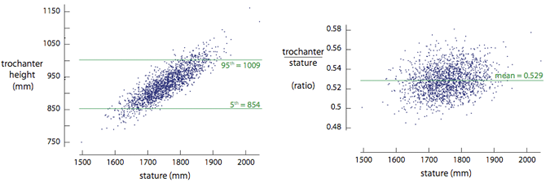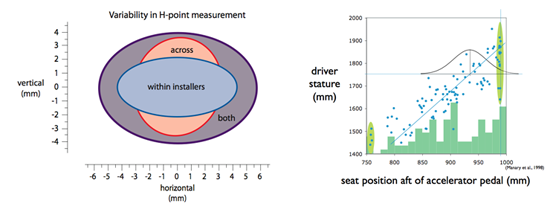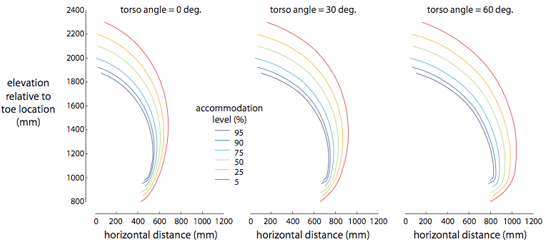
by mbp11 | Aug 3, 2008 | Publications
Designing for human variability frequently necessitates an estimation of the spatial requirements of the intended user population. These measures are often obtained from “proportionality constants” which predict the lengths of relevant anthropometry using...

by mbp11 | Jun 17, 2008 | Publications
This paper advances a method of extrapolating, to target populations, inter-relationships in the anthropometry of an existing population database. Previous methods, including those that are based on using proportionality constants and those that involve developing...

by mbp11 | Jun 17, 2008 | Publications
Designing for human variability (DfHV) requires efficient allocation of sizing and adjustability. This can preserve product performance while reducing some measures of cost. For example, specifying only as much adjustability as necessary for a desired level of...

by mbp11 | Dec 10, 2007 | Publications
The new Federal Motor Vehicle Safety Standard governing head restraints (FMVSS 202a) is designed to protect vehicle occupants in rear-impact crashes. Static compliance requires meeting guidelines on, among other things, a measure called “backset”–the...

by mbp11 | Jun 12, 2007 | Publications
Standing reach envelopes are important tools for the design of industrial and vehicle environments. Previous work in this area has focussed on manikin-based (where a few manikins are used to simulate individuals reaching within the region of interest) and...

by mbp11 | Dec 20, 2006 | Publications
One important source of variability in the performance and success of products designed for use by people is the people themselves. In many cases, the acceptability of the design is affected more by the variability in the human users than by the variability...






